I first became aware of Blackhead in the late 1960s. I had joined the surf life saving club at Brighton, and would often be driven down the long steep dirt road toward the ocean at Blackhead below before the road turned sharply to the right and off to Brighton .
As I moved from surf life saving to board riding, I became much more familiar with Blackhead. While the quarry was present at this point, there were three environmental issues that came to my attention at this time. Blackhead was used as a place to burn the insulation off copper wire.
• Large piles were often heaped up on the ocean side of the headland and burnt off sending black pillars of smoke out to sea.
• Tar distillate was dumped in large pits in the same area, this later seeped out and down the water course that is the small towards the ocean. As far as I can establish this was from cleaning roading equipment operated by Fulton Hogan, and was an unauthorized activity. Anyone who walked down the track beside the creek at this time would remember the black ooze that poured out of the sand and into the water. They might also remember the tricky navigation required to avoid it.
• The raw sewerage that often washed up on the beach
Because of the unique qualities of Blackhead as a wave,( it is one of the few places near Dunedin that is offshore on a North east wind) I spent more and more time surfing there. I remember great sessions with Jock Benfell, Graham Carse, Kim Westerskov, Tony Ropita, Dave Crooks, Rex VonHuben.As the quarrying began to alter the profile of the headland, I was prompted by John Leslie to walk around and look at the stunning rock formations. Once I did so I realized that these fantastic forms would be under threat. I engaged in a project, where I walked out there and took photographs almost every week for a year. The result was an archive of about 100 - 35mm films - and about 3,500 photographs. During these photographic expeditions, I would often take other artists and others concerned about the demise of blackhead, including Chris Cree Brown, Peter Nicholls, Dereck Ball, Adrian Harrison, Sydney Mann. All were astonished with the fabulous rock formations and were supportive of some form of protection.
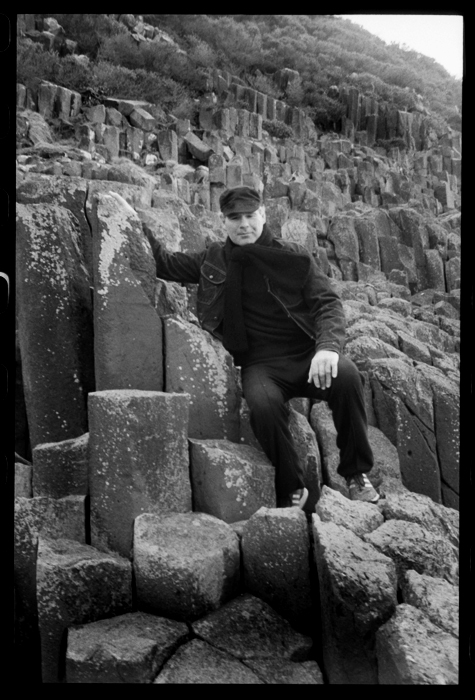
Sculptor Peter Nicholls at Blackhead - Photo Lloyd Godman
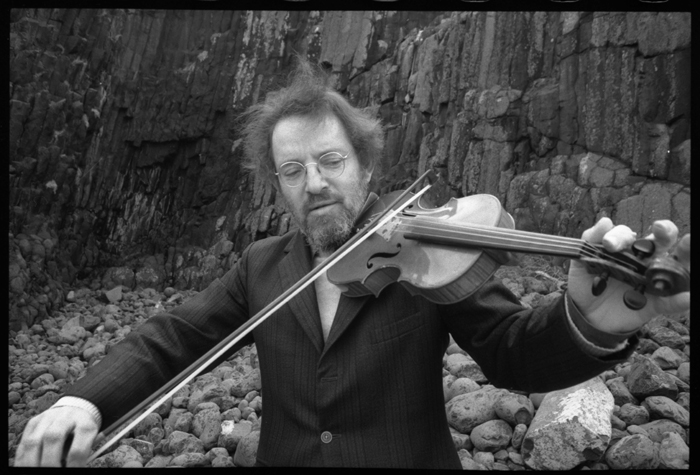
Concert Violinist Sydney Mann playing in the natural amphitheater at Blackhead - Photo - Lloyd Godman.
From this grew not only the exhibition, Secrets of the Forgotten Tapu, but an awareness that led to the formation of the friends of Blackhead that prompted negotiations with Doc and the Quarry to form a covenant of part of the rock formation.This process involved several meetings with the quarry management and the friends group. The quarries perspective was that because the was no Queens Chain - (originally the rocks were considered too steep to survey0 they owned it all and could mine it to sea level- which was their intention. In fact their ultimate plan was to mine a huge bowl, 50 ft below sea level with and 8- 10 ft wall around the perimeter which would act as a break water. Then on the north east side to cut an entrance that would flood the bowl so it could be used as a boat anchorage. The Maori position was that it was a Tapu place and should be completely left alone. The surfers perspective was that the headland protected the beach from NE winds and should not be altered.
After several meetings a site meeting was called with all parties where an inflatable surf boat transported everyone out to the site for a closer look. From here negotiations continued with DOC and the Quarry management where the covenant was drawn up to protect the selected areas of the formations.
Later in the 1980s, I would drive along the beach from Brighton for a surf.
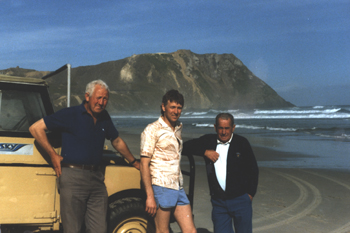
Lloyd Godman centre,
his father Ron, on the left and Lloyd Mayes (shorty) his uncle and name sake with
the headland in the back ground Cir 1987. A scar can be seen down the
headland where the clay over burden had been tipped over the side into
the ocean.
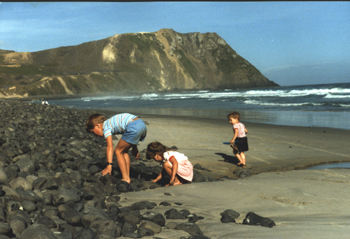
From left, Lloyd Godman's
nephew Richard Stewart, his Niece Rachael Stewart and son Stefan Cir
1989 - the weather worn basalt rocks can be seen on the left spread 100s of meters down the beach.
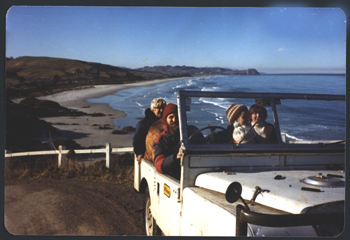
Lloyd Godman in his old
1953 Land Rover with Sister Wendy in the front with her son Richard
Stewart, his mother Joan back left and wife Elaine right. The Blackhead
can be seen in the far distance
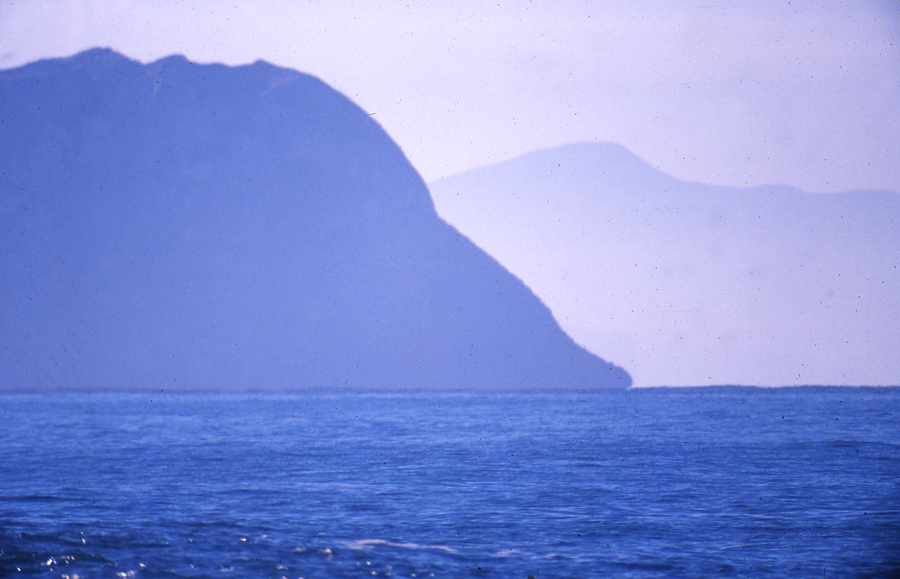 .
.
The profile of Blackhead,
Dunedin New Zealand from the southwest side cir. 1980 - note the first cuts into the top of the headland - compare this with the profile in the top image.